- Car
- Duesenberg (2 offers)
Duesenberg classic cars for sale
Duesenberg vehicles represent the pinnacle of American engineering from the golden age of automotive manufacture. Renowned for their pioneering straight-eight engines, imposing chassis, and extravagant craftsmanship, Duesenbergs were favoured among celebrities and royals alike. Every car was a unique piece, crafted to individual order, with state-of-the-art technology and unmatched luxury.
Search results
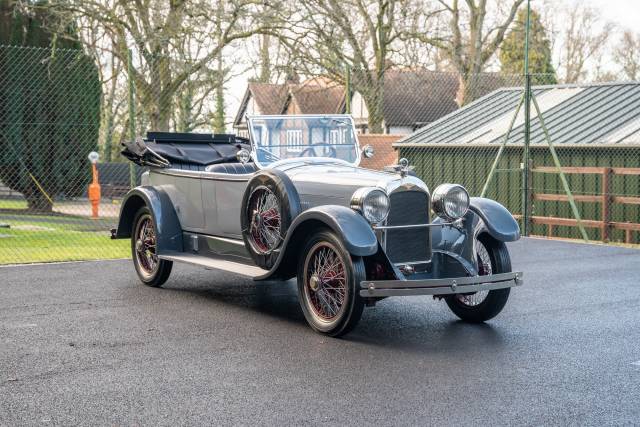
1922 | Duesenberg Model A
1922 Duesenberg Model A Phaeton

Duesenberg listing references from Classic Trader
Below you will find listings related to your search that are no longer available on Classic Trader. Use this information to gain insight into availability, value trends, and current pricing for a "Duesenberg" to make a more informed purchasing decision.
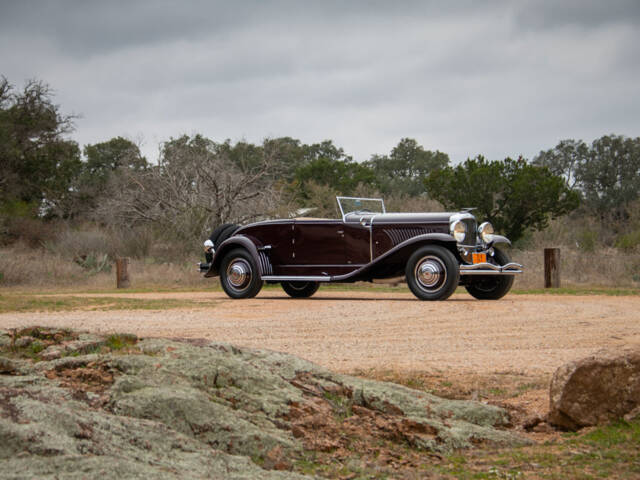
1930 | Duesenberg Model J Murphy
1930 Duesenberg Model J 'Disappearing Top' Convertible Coupe by Murphy
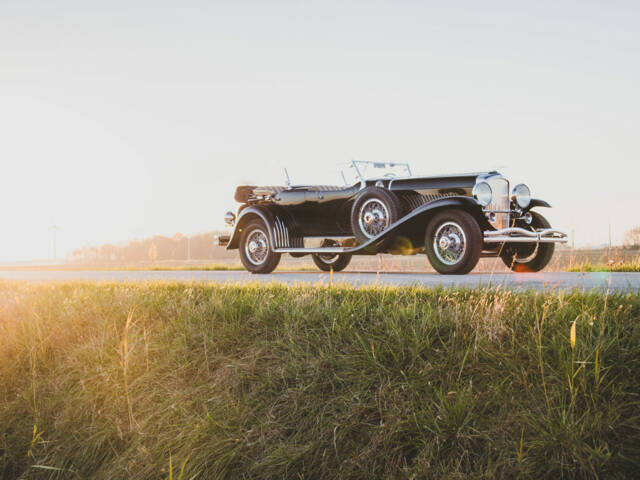
1929 | Duesenberg Model J
1929 Duesenberg Model J 'Sweep Panel' Dual-Cowl Phaeton by LeBaron
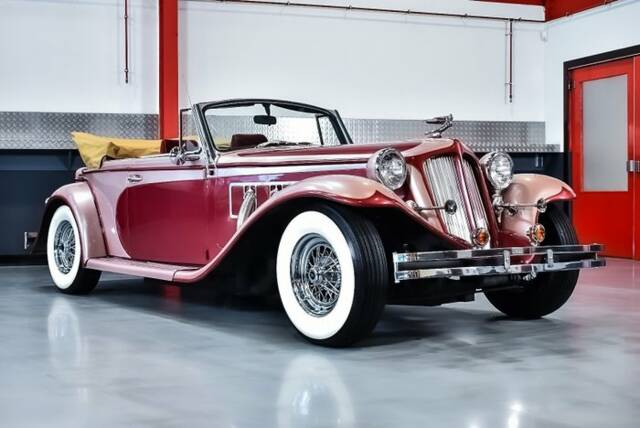
1983 | Duesenberg Model A
Volkswagen - Duesenberg Phaeton Convertible "1930" Tribute - 1983

1937 | Duesenberg Model J
1987 Duesenberg II "Disappearing Top Murphy" Roadster
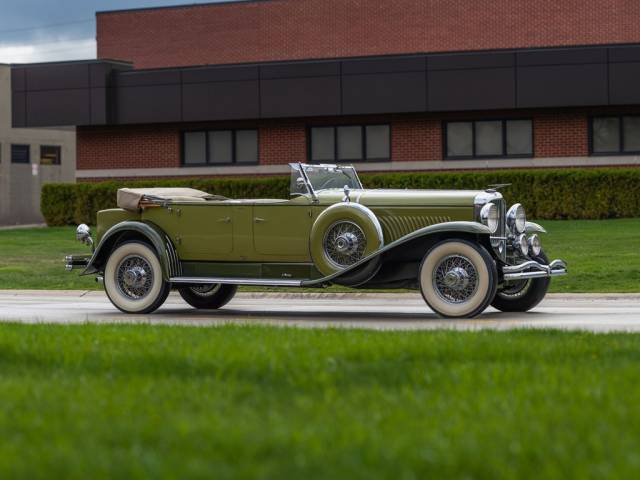
1931 | Duesenberg Model J
1931 Duesenberg Model J Tourster by Derham
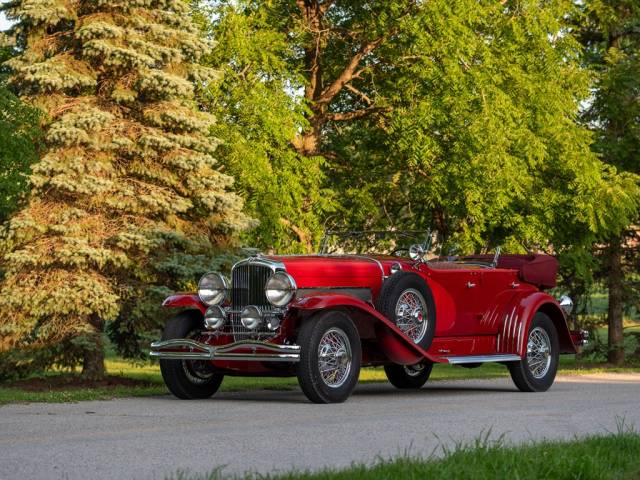
1935 | Duesenberg Model SJ
1935 Duesenberg Model SJ 'Sweep Panel' Dual-Cowl Phaeton by LaGrande
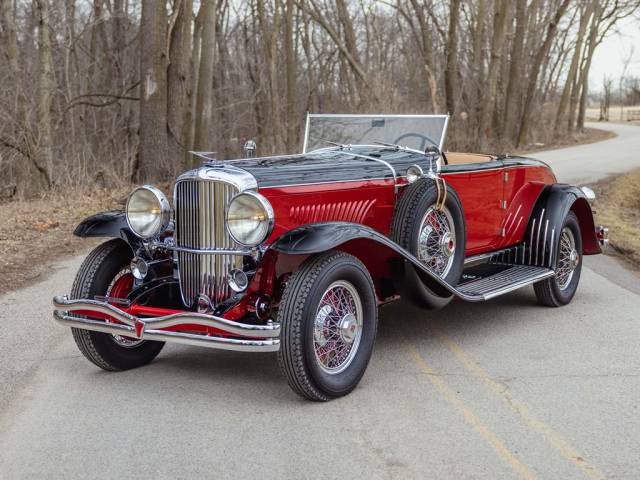
1931 | Duesenberg Model J Murphy
1931 Duesenberg Model J 'Disappearing Top' Convertible Coupe by Murphy

1929 | Duesenberg Model J Murphy
1929 Duesenberg Model J Sport Sedan by Murphy

1935 | Duesenberg Model J Rollston
1935 Duesenberg Model J Convertible Coupe by Rollston
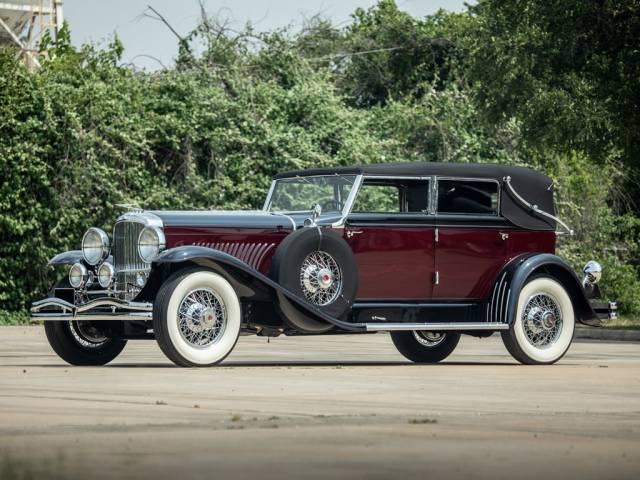
1930 | Duesenberg Model J LeBaron
1930 Duesenberg Model J Convertible Berline by LeBaron
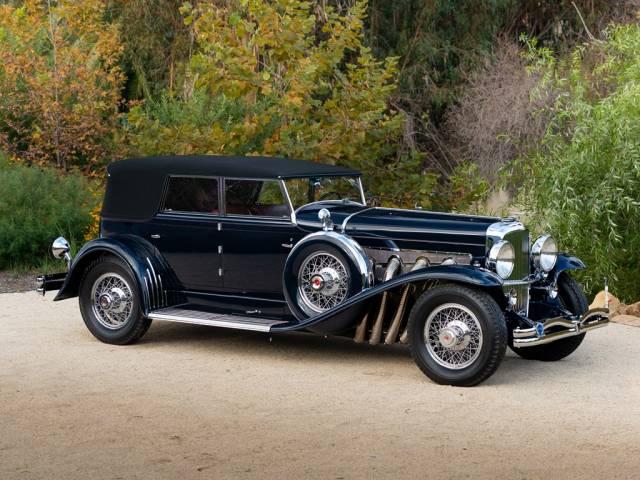
1930 | Duesenberg Model J
1930 Duesenberg Model J Convertible Sedan by Murphy
History of Duesenberg
Duesenberg, established in 1913 by self-taught engineers Fred and August Duesenberg, initially focused on performance enhancements and engine development, notably for marine and aviation applications. Their expertise quickly translated to the automotive world, resulting in the first Duesenberg passenger cars by 1920, fabricated at their Indianapolis factory. The brand soon shot to international fame with major motorsports victories, including a milestone win at the 1921 French Grand Prix and multiple Indianapolis 500 successes. Duesenberg's reputation was built on technical advancements: four-wheel hydraulic brakes, straight-eight DOHC engines, and later supercharging. Throughout the 1920s and 1930s, their cars became synonymous with American luxury and performance. Ownership by E.L. Cord saw Duesenberg positioned as the ultimate status symbol for elites, but economic turmoil during the Great Depression led to the company's closure in 1937. Despite this, Duesenberg's technological legacy and aura remain unrivalled in the classic car world.
Model History
Each Duesenberg model is genuinely unique, reflecting a philosophy where no two cars were identical. The journey began with the Model A in 1921, an engineering marvel for its time, equipped with a straight-eight engine, overhead camshafts, and hydraulic brakes. The rarity of the next project, Model X (1926–1927), is underscored by a production run of only 13 units, which paved the way for the Model J—often cited as the most significant leap forward in luxury and performance. Launched in 1928, the Model J boasted a 6.9-litre DOHC straight-eight producing up to 265 hp, custom bodies from exclusive coachbuilders, and tailored interiors. Of the estimated 650 to 1,200 cars built across all series, about half remain today—most retained in pristine condition or preserved collections.
Highlights of Duesenberg vehicles
Duesenberg introduced advanced technologies like supercharging (notably on the mighty Model SJ), dual overhead camshafts, and consistently strong steel and aluminium construction. Bespoke features abounded: disappearing top cabriolets, distinctive bodywork from legendary coachbuilders, and luxurious interiors with top-grade leathers and large instrument clusters. Only 36 Model SJ superchargers were delivered, offering unmatched performance—up to 320 hp, a 0–100 mph acceleration in 20 seconds, and a true cruising capability at both extremes of the speedometer. High-profile awards at Concours d’Elegance and full 'Classic' status by the CCCA underline Duesenberg’s ongoing collector appeal.
Technical Data
Special Editions and Collectible Models
Duesenberg's exclusivity is emphasised in the rarest models, such as the 1926–27 Model X (just 13 built) and factory-delivered Model SJ supercharged variants (36 superchargers known). The Murphy 'Disappearing Top' Roadster, Derham Tourster, and LaGrande Phaeton are particularly sought after for their combination of innovation and style. The Tourster, designed by Gordon M. Buehrig, is renowned for elegant engineering and a remarkably low silhouette. Duesenberg II, a modern recreation by Elite Heritage Motors, reinterprets the Model J with precise details, classic styling, and hidden contemporary features.
Weak Spots and Common Issues
Due to their individual construction and advanced technology for their day, maintenance on a Duesenberg demands extensive knowledge of pre-war engineering. Replacement parts for the twin-overhead-cam straight-eight and supercharger systems can be difficult to source and may require specialist fabrication. Coachbuilt bodies—often out of aluminium—need high-level restoration skills; each car’s unique build can complicate even routine repairs. Period-correct authenticity is critical in preserving value, so professional support and thorough documentation are essential with purchase and restoration.
Engine, Performance, Transmission and Handling
Early supercharged Duesenbergs, particularly the Model SJ, set new performance benchmarks in the pre-war luxury class. The 6.9-litre eight-cylinder delivered a genuine 320 hp and up to 130 mph, surpassing all other American production vehicles of the era. The unique combination of high-speed cruising and low-speed torque—thanks to advanced gearbox and supercharger systems—made these cars equally adept at city driving and open-road sprinting. The robust chassis, long wheelbase (e.g. 153.5 inches on Toursters), and bespoke suspension provided smooth, stable dynamics regardless of body style or coachbuilder. - Model A: Advanced four-valve, single overhead cam eight-cylinder; hydraulic brakes; approximately 650 built.
- Model X: 100 hp, ~100 mph top speed; only 13 built.
- Model J: 6.9-litre DOHC straight-eight, 265 hp; custom bodywork; apex of luxury and performance.
- Model SJ (supercharged): Up to 320 hp, 0–100 mph in 20 seconds; 36 superchargers, low production numbers.
Interior, Comfort, Exterior and Design
Duesenberg design is defined by its blend of technical precision and stylistic grandeur. Gordon M. Buehrig’s Tourster and the Murphy Roadster feature low, elegant rooflines and disappearing convertible tops. Interiors showcase large, detailed classic dials, often aluminium-faced, with hand-stitched leather and bespoke wood or metal trim. Exteriors range from sleek open-top phaetons to imposing closed sedans, all hand-built in steel and aluminium—frequently accented with chromed spoked wheels, dual spare tyres, and intricate coachwork. Noteworthy accessories include rumble seats, folding luggage racks, motometers, and distinctive Duesenberg-script badging. Modern Duesenberg II recreations maintain these hallmarks, integrating elements like power windows, modern air conditioning, and servo-assisted brakes without altering the outward period authenticity.
Other Features
Several Duesenberg models have earned certification from the Auburn Cord Duesenberg Club and, where present, 'Full Classic' validation from the Classic Car Club of America. Many survivors feature vividly documented provenance and detailed historical records, enhancing their technical and cultural value. Duesenberg's mythos is intertwined with American high society and global celebrity culture, and its influence remains visible in luxury automobile design to this day.
Summary
Duesenberg stands apart in the world of classic automobiles for its uncompromised engineering, technological firsts, and show-stopping bespoke design. From racetrack victories to the salons of royalty, these cars represent an era when the American luxury car was at its uncompromising best. They remain the ultimate technical challenge and prize for collectors and enthusiasts who value both precision engineering and historical significance.

